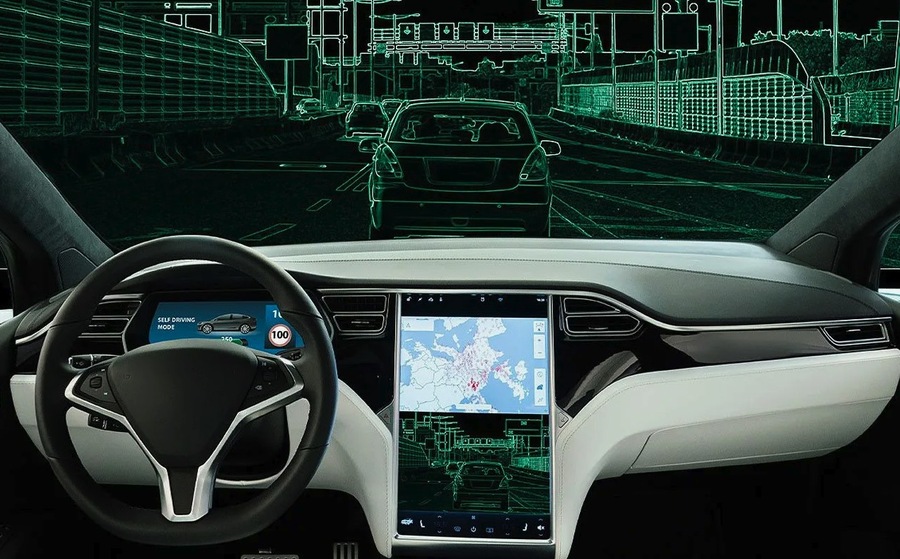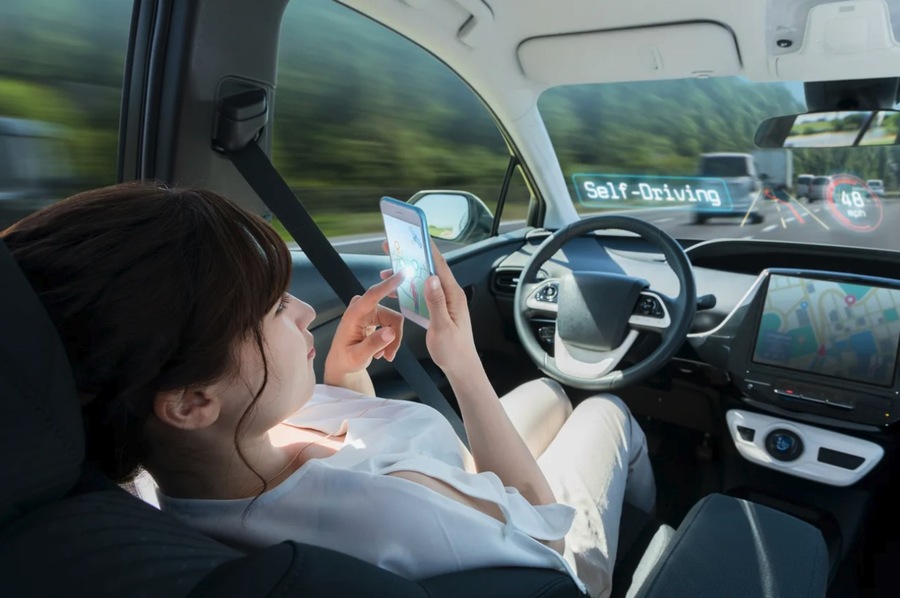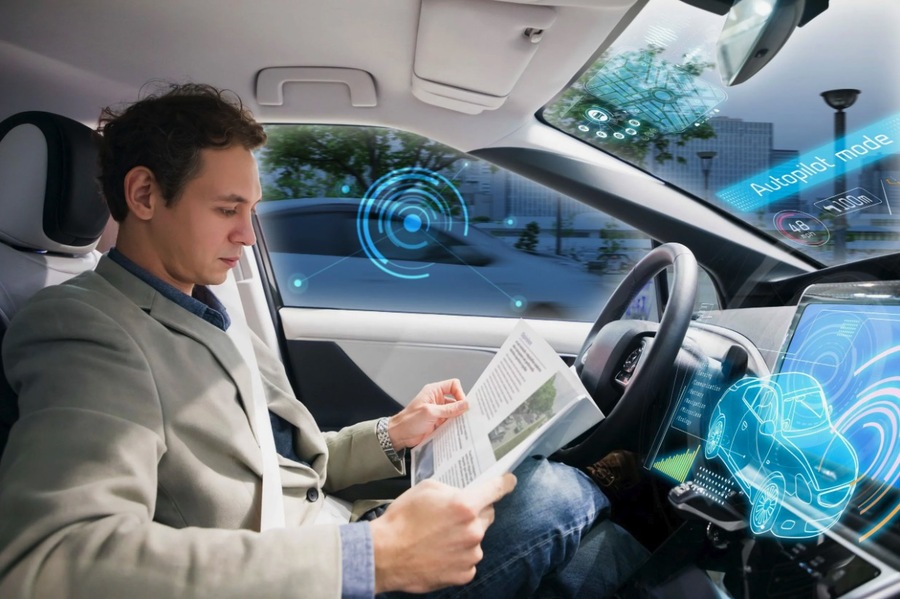Autopilot cars, also known as self-driving or autonomous cars, are vehicles equipped with advanced technologies that allow them to operate without constant human intervention. These technologies include a combination of complex algorithms, sensors, cameras, and artificial intelligence, which work together to navigate and control the vehicle. Autopilot systems enable cars to start, steer, change gears, and respond to obstacles independently, making driving safer and more convenient. The goal of these systems is to reduce human error, enhance safety, and provide a more comfortable driving experience. Experience the future of driving with monthly car rental Dubai options.
The History of Autopilot Cars
1925: The First Autonomous Car Prototype
The journey of autonomous vehicles began in 1925 when American inventor Francis Houdina showcased the world’s first autonomous car, a Chandler convertible. At a special event in New York, the Chandler was demonstrated driving through the streets, starting, changing gears, steering, and honking the horn without any human control. This event marked the beginning of the quest for self-driving cars and showcased the potential for vehicles to operate independently.
1968: Europe’s First Autonomous Vehicle Prototype
In 1968, the first European prototype of an unmanned vehicle was introduced with the Mercedes 250 sedan. This prototype represented a significant advancement in the pursuit of autonomous driving technologies, laying the groundwork for future innovations. The Mercedes 250 sedan demonstrated the feasibility of using sensors and electronic controls to manage a vehicle’s movement without human intervention.
1980: The Mercedes-Benz Vario Van
In 1980, German engineer Ernst Dickmanns led a team of inventors to create an autonomous vehicle based on the Mercedes-Benz Vario van. This vehicle could follow a predetermined path, change lanes, and make turns autonomously. It was a significant milestone that demonstrated the potential of autonomous vehicles in real-world scenarios. The Vario van project highlighted the advancements in sensor technology and computer algorithms needed to enable self-driving capabilities.

How Do Autopilot Cars Work?
The process of moving cars on autopilot involves the continuous execution of multiple tasks in real-time, including:
– Localization: Determining the car’s exact location on the map using GPS and other sensors. Accurate localization is crucial for ensuring that the vehicle stays on the correct path and follows the intended route.
– Perception: Using cameras, LIDAR, radar, and other sensors to detect and interpret the environment, including other vehicles, pedestrians, and obstacles. Perception systems gather data about the surrounding environment and identify potential hazards.
– Prediction: Anticipating the actions of other road users based on their current behavior and predicting potential hazards. Prediction algorithms analyze the movement patterns of other vehicles and pedestrians to anticipate their future actions.
– Planning: Making decisions on the car’s path, including speed adjustments, lane changes, and turns, to ensure safe and efficient travel. Planning systems determine the best course of action to navigate through traffic and reach the destination safely.
Levels of Autopilot in Cars
Autonomous driving technology is categorized into six levels, defined by the Society of Automotive Engineers (SAE):
– Level 0 (No Automation): The human driver is responsible for all aspects of driving. The vehicle may provide warnings or momentary assistance, but there is no sustained automation.
– Level 1 (Driver Assistance): The vehicle can assist with either steering or acceleration/deceleration, but not both simultaneously. Examples include adaptive cruise control and lane-keeping assistance, where the driver remains in control.
– Level 2 (Partial Automation): The car can control both steering and acceleration/deceleration, but the human driver must remain engaged and monitor the driving environment. Examples include Tesla’s Autopilot and GM’s Super Cruise, which require the driver to be ready to take over at any moment.
– Level 3 (Conditional Automation): The vehicle can handle all aspects of driving under certain conditions, but the driver must be ready to take control when prompted. Examples include Audi’s Traffic Jam Pilot, which can manage driving in traffic jams but requires the driver to take over in more complex situations.
– Level 4 (High Automation): The car can operate without human intervention in specific environments or conditions. However, it may still require a driver in some situations. Examples include Waymo’s autonomous taxis, which operate in geofenced areas and specific conditions.
– Level 5 (Full Automation): The vehicle can perform all driving tasks under all conditions without any human intervention. This level represents the ultimate goal of autonomous driving technology, where the vehicle can handle any scenario a human driver could.
Examples of Companies and Cars with Autopilot
Several companies are leading the charge in developing and deploying autonomous vehicles. Some notable examples include:
– Tesla: Tesla’s Autopilot and Full Self-Driving (FSD) systems are among the most advanced in the market, offering features like automatic lane changes, autopark, summon, and traffic light and stop sign control. Notable models include the Tesla Model S, Model 3, Model X, and Model Y. Tesla continues to innovate and improve its autopilot capabilities through over-the-air software updates.
– Waymo: A subsidiary of Alphabet Inc. (Google’s parent company), Waymo has developed fully autonomous vehicles that operate in select areas. Their autonomous minivans and Jaguars are part of Waymo One, a ride-hailing service available in certain cities. Waymo’s technology focuses on high levels of automation and safety.
– General Motors (GM): GM’s Super Cruise technology, available in models like the Cadillac CT6 and Chevrolet Bolt EUV, offers hands-free driving on designated highways. Super Cruise uses a combination of cameras, sensors, and GPS to enable hands-free driving on mapped highways.
– Nissan: Nissan’s ProPILOT Assist system, featured in models like the Nissan Leaf and Rogue, provides advanced driver assistance with semi-autonomous capabilities. ProPILOT Assist combines adaptive cruise control with lane-keeping assistance for a smoother driving experience.
– Audi: Audi’s Traffic Jam Pilot, available in the Audi A8, represents a significant step toward higher levels of automation, particularly in congested traffic conditions. Traffic Jam Pilot can take over driving in traffic jams, allowing the driver to relax and focus on other tasks.
– Mercedes-Benz: Mercedes’ Drive Pilot, available in the S-Class and EQS models, provides Level 3 automation for certain driving conditions. Drive Pilot can handle driving tasks on highways, allowing the driver to take their hands off the wheel and focus on other activities.

Benefits of Cars with Autopilot
Autonomous vehicles offer numerous advantages, including:
– Increased Safety: Autonomous vehicles are designed to reduce human error, which is a leading cause of accidents. They can react faster than humans and are not subject to distractions, fatigue, or impairment. Autonomous systems are programmed to follow traffic rules and maintain safe distances from other vehicles.
– Improved Traffic Flow: Autonomous vehicles can optimize speed and spacing, reducing traffic congestion and improving overall traffic flow. Coordinated movements and real-time data sharing between vehicles can lead to more efficient traffic management.
– Enhanced Mobility: Self-driving cars can provide mobility for individuals who are unable to drive, such as the elderly or disabled. Autonomous vehicles can offer greater independence and accessibility to people with mobility challenges.
– Fuel Efficiency: Autonomous vehicles can optimize driving patterns for better fuel efficiency, reducing emissions and operating costs. Smooth acceleration and braking, along with efficient route planning, contribute to lower fuel consumption.
– Convenience: Autonomous vehicles allow drivers to focus on other tasks or relax during their commute, enhancing the overall driving experience. Passengers can work, read, or enjoy entertainment while the vehicle handles the driving.
Conclusion
Autopilot cars have transitioned from a futuristic concept to a burgeoning reality, thanks to advancements in technology and engineering. From the early prototypes of the 1925 Chandler convertible to the sophisticated systems in today’s vehicles, autonomous driving technology continues to evolve and improve. Companies like Tesla, Waymo, and GM are at the forefront of this revolution, offering increasingly advanced features and capabilities.
As technology progresses, the benefits of autonomous vehicles—such as increased safety, improved traffic flow, and enhanced mobility—will become more apparent. For those looking to experience the future of driving, autonomous vehicles provide a glimpse into a world where driving is safer, more efficient, and more convenient. The continued development and deployment of autonomous vehicles will shape the future of transportation, making roads safer and travel more enjoyable for everyone.
“Everyone has to find what is right for them, and it is different for everyone. Eating for me is how you proclaim your beliefs three times a day. That is why all religions have rules about eating. Three times a day, I remind myself that I value life and do not want to cause pain to or kill other living beings. That is why I eat the way I do.” -Natalie Portman
